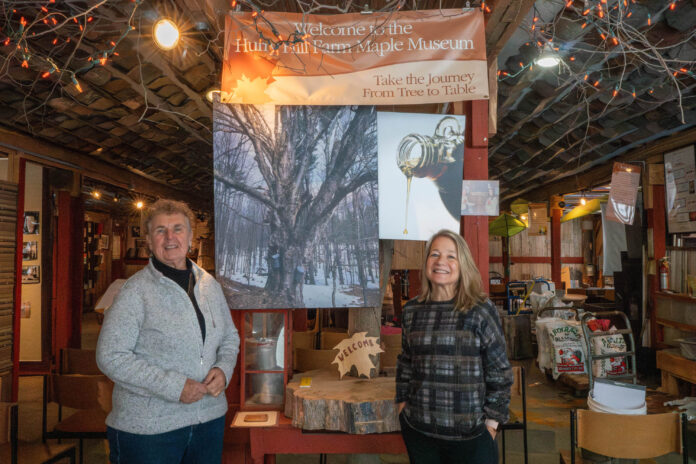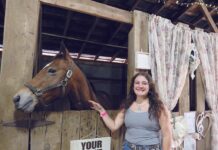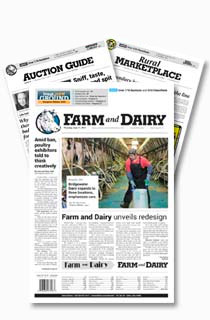
EDINBORO, Pa. — “The sap is the first miracle that happens every spring. After all winter, with everything shut up and tight, the trees are alive again,” said Virginia Sorensen in her Newbery Medal award-winning book “Miracles on Maple Hill.”
“Miracles on Maple Hill” is a story based on real people making maple syrup in Edinboro, Pennsylvania in the 1950s. Janet Woods, a native of Edinboro, opened up Hurry Hill Maple Farm and Museum 15 years ago to honor this classic book and the history of maple syrup production.
Through decades of digging, Woods identified the real-life characters that inspired the book and obtained objects from the original story. With the museum, Woods hopes to pass on the legacy of making maple syrup to the next generation.
“The people who know about (the book are) getting older,” Woods said. “Getting new generations and new people hooked to the book, either via the maple syrup or by way of the Newbery Medal or by the fact it’s about Pennsylvania, whichever it is. This is really important.”

A child-like wonder
Woods has been fascinated by the art of sugarmaking since she was a little girl. At the age of 5, she remembers sitting on the kitchen countertop watching the thermometer — if it got cold enough, she knew the sap would be flowing. But suddenly, Woods fell off the counter and onto a nail that embedded itself into her groin.
“I had to go get stitches,” Woods said. “All the way home, I’m in the back of the car and I’m crying, and my dad says ‘Stop crying. Why are you crying?’ I said, ‘I’m not crying because it hurts. It does hurt. I’m crying because you’re not going to let me go to Ernie’s sugarhouse.’”
Ernie Meacham was Woods’ neighbor who she helped make maple syrup. Woods, her brothers Tom and Jerry and her father Paul, a dairy farmer, also made maple syrup by boiling sap in a flat pan in their front yard.
In 1958, when Woods was just 10 years old, her family bought Meacham’s farm and built a bigger sugarhouse beside his. Around this time, Sorensen also released “Miracles on Maple Hill” and won a Newbery Medal for it in 1957. The award is given out annually by the Association of Library Service to Children to an author who made a “significant contribution to American literature for children.”
The book is told from the perspective of Marly, a 10-year-old girl, whose family is in the process of moving to her grandma’s house on Maple Hill. Marly’s father, Dale, has PTSD from serving in a recent war.
The family moves to the countryside hoping it will be better for him than the bustling city of Pittsburgh. In Maple Hill, the family settles into country life, enjoying the company of neighbors and immersing themselves in nature and sugarmaking.
The first time Woods read the book was in third grade. Sorensen visited Woods’ school in 1957 and read the book to her third-grade classroom. Woods was out with chicken pox at the time and missed the reading, but admits the book resonated more with her as she grew up.
“I love that book much more as an adult because it’s about PTSD. It’s about people who are real in Edinboro. The story is real to syrup (even though) the story is fiction,” Woods said.
This fascination would lead to a decades-long hunt to uncover the true characters of the story and, eventually, open a museum.
Preserving local history
Woods took over maple syrup production in 1992 after her father died. Over the years, Woods has mentored people on how to make syrup — some of which went on to be maple producers themselves — and at the 2025 Pennsylvania Farm Show, she won Best of Show for her syrup.
Before her success as a maple syrup producer, however, she worked full-time as a principal and made syrup on the side. It was shortly after she took over operations in the early ‘90s that she started investigating the real identities of the characters in “Miracles on Maple Hill.”
Woods was able to identify almost all of them by reaching out to their descendants. One of these descendants was the character Harry the Hemit’s grandson’s wife Betty.
“I thought, ‘I feel like Willy Wonka and the golden ticket here.’ It’s her, I’ve got the right family,” Woods said about finding Betty.
Through these connections, Woods obtained artifacts described in the book and pictures of the real people. Some of these artifacts on display include a mailbox illustrated in the story, hand-carved wooden chains, a medicine cabinet and old medicine bottles and the real fireplace used to boil sap in the sugar house.
Woods, however, is most proud of one artifact in particular: Sorsensen’s Newbery Medal. She was gifted the medal by Sorensen’s son Fred, but locating him wasn’t easy. She first tried contacting all the Fred Sorsensens in Hendersonville, North Carolina. After this was unsuccessful, she reached out to Mary Lythgoe Bradford, an unofficial biographer of Sorensen.
Through Bradford, she got in contact with Fred who traveled to Edinboro in 2006 to see the exhibit. It was on this trip that Fred gifted Woods the medal.
“I’m like ‘Fred, I’m not part of your family. Why would you do that?’ He said ‘Because it’s been sitting on my shelf here for years. I want every kid that reads the book to hold this medal.’ (Today) tens of thousands of people have held this medal,” Woods said.
The museum officially opened in March 2009 with the help of Woods’ friend, Theresa Gamble, an archivist who has a degree in museum work. It features several exhibits including “Miracles on Maple Hill,” old maple syrup bottles and production tools, the Native American history of maple syrup and how maple trees produce sap.
Woods and Gamble encourage people to read the book before visiting — recognizing the characters in the book is a transformative experience.
“When you stand in the museum, you’re standing in the book,” Woods said. Kids will read the book and visit the museum, and when their “eye goes to Joe and Marly, they’re like ‘Is that them? Is that the real pictures?’ And then it’s like an explosion.”
At 76 years old, Woods is thinking about the future of the museum. She wants to preserve the legacy of “Miracles on Maple Hill” long after she’s gone and has been looking at places where the exhibit can go.
She hopes to have a plan within the next three to five years because, at the end of the day, it’s about inspiring the next generation with the magic of maple syrup.
“This book has meaning. Maple syrup has meaning. I can’t tell you how many kids I see after they’ve been here, they go home and find a maple tree and their parents make it,” Woods said.
Hurry Hill Maple Farm and Museum will host its 2025 Maple Tour on March 15-16 from 10 a.m. to 4 p.m. at the museum, 11424 Fry Road, Edinboro, Pennsylvania. The museum will be open every Sunday starting after their maple tour. Woods’ new cookbook, containing 170 maple recipes, will be for sale at the museum. For more information, visit https://hurryhillfarm.org or contact hurryhillfarm@verizon.net or 814-572-1358.
(Liz Partsch can be reached at epartsch@farmanddairy.com or 330-337-3419.)































